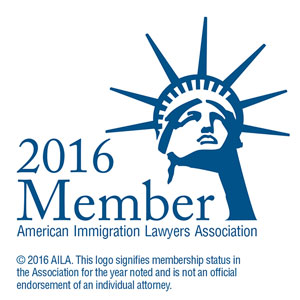State Department’s Holiday Gifts: Expanded Interview Waivers and Lenient View on Student Nonimmigrant Intent
The State Department has given much needed holiday gifts to ease delays in visa processing brought about by the evisceration of consular operations due to Covid-19.
According to a December 22, 2021 article in Roll Call, visa applicants in London, Paris and Mexico City, for instance, must wait about two months for a nonimmigrant visa appointment. In Toronto, the wait for such an appointment is more than a year, while at US Consulates in India, visa appointments are available only on an emergency basis. The situation has become so dire that many in the US who are in status but whose nonimmigrant visas have expired prefer to remain in the US rather than travel abroad to visit family. Those who leave the US must wait for months before they can get a new visa to reenter the US.
I was quoted in the Roll Call article advocating that the 48 month interview waiver policy be extended, and a day later on December 23, 2021, the State Department did precisely this by indefinitely extending the in-person interview for applicants renewing a visa in the same visa class within 48 months of the prior visa’s expiration. The State Department went even further by waiving the in person interview for many nonimmigrant visa classifications. To summarize: Those who have previously received any type of visa, or have used ESTA to travel to the US, and have never been refused a visa in a way that wasn’t overcome, may be able to obtain H-1B, H-3, H-4, L, O, P, and Q visas without an interview. The expanded interview waiver policy can be found at https://www.state.gov/expanded-interview-waivers-for-certain-nonimmigrant-visa-applicants/.
The expanded interview waiver policy will most certainly provide relief to visa applicants who were otherwise subject to interminable delays in visa processing as a result of limited visa operations due to Covid-19. It will also allow consulates to focus their limited resources on visas that require interviews such as immigrant vias, E visas and those not subject to the expanded interview waiver policy thus shortening the delays. Even if interviews can be waived, “embassies and consulates may still require an in-person interview on a case-by-case basis and dependent upon local conditions.” There is also uncertainty whether people would be able to easily schedule Drop Box appointments as many report that obtaining such appointments in India are hard to get.
The State Department’s expanded interview waiver policy is an example of how the Biden administration can bring about much needed relief to visa applicants through a simple administrative fix. More can be done such as reinstating the ability to obtain a visa stamp in the US itself if the first visa in the same classification was issued at a US embassy or consulate. This used to be the case until the State Department discontinued stateside visa processing in 2004 as a result of the need to impose enhanced security measures after the September 11, 2001 attacks. The State Department should also consider conducting video interviews, among other measures suggested by AILA to reopen America, as that would certainly help in reducing the backlog of immigrant visa applicants waiting to be processed at US consulates around the world.
Relaxed Policy in Determining Student Nonimmigrant Intent
In another smart move, the State Department brought back the relaxed policy regarding F-1 and M-1 visa nonimmigrant intent in the Foreign Affairs Manual at https://fam.state.gov/FAM/09FAM/09FAM040205.html. The new policy recognizes that students applying for F-1 or M-1 visas do not have the same strong ties with their home country as B visa applicants, and they should not be subject to the same vigorous scrutiny of determining whether they have a residence abroad which they have no intention of abandoning and whether they intend to depart the US after they finish their studies. The following extract from 9 FAM 402.5-5(E)(1) is worth noting as its refreshing:
The context of the residence abroad requirement for student visas inherently differs from the context for B visitor visas or other short-term visas. The statute clearly presupposes that the natural circumstances and conditions of being a student do not disqualify that applicant from obtaining a student visa. It is natural that the student does not possess ties of property, employment, and continuity of life typical of B visa applicants. These ties are typically weakly held by student applicants, as the student is often single, unemployed, without property, and is at the stage in life of deciding and developing their plans for the future. Student visa adjudication is made more complex by the fact that students typically are expected to stay in the United States longer than do many other nonimmigrant visitors, to complete their program of studies. In these circumstances, it is important to keep in mind that the applicant’s intent is to be adjudicated based on present intent – not on contingencies of what might happen in the future, after a lengthy period of study in the United States. Therefore, the residence abroad requirement for student applicants should be considered in the context of the usual limited ties that a student would have, and their immediate intent………
While students may not be able to demonstrate the same strong “ties,” present in other classes of applicants, their typical youth often conveys a countervailing major advantage in establishing their bona fides: they are not expected to, or do not necessarily have a long-range plan, and may legitimately not be able to fully explain their plans at the conclusion of their studies. As most students are relatively young and many reside with parents or guardians, you can consider a student to be maintaining a residence abroad if he or she intends to return to reside with parents or guardians. Nonetheless, you must be satisfied at the time of application for a visa that the visa applicant possesses the present intent to depart the United States at the conclusion of his or her approved activities. That this intention is subject to change or even likely to change is not a sufficient reason to deny a visa. Further, the present intent to depart, does not infer the need to return to the country from which they hold a passport. It means only that they must intend to leave the United States upon completion of studies.
This was the prior policy of the State Department from 2005 until it was modified by the Trump administration in 2017, and the history of this policy is discussed in our prior blog State Department Toughens Standard for Assessing a Foreign Student’s Ties With Home Country. It was first articulated in 2005 after student visa applications were being denied in the aftermath of the September 11 terrorist attacks. The new policy that required examining a student’s nonimmigrant intent more leniently led to fewer student visa refusals. The Trump administration guidance was more restrictive, but student visa applications were not being wholesale rejected although students were more vulnerable to rejections as consular officers could not rely on the same broad guidance as before. Based on the reaffirmation of the relaxed guidance on December 20, 2021, students applying for F or M visas should not be denied just because they do not have strong ties with the home country, and even though the student must still demonstrate a present intent to depart the US, if this intention is subject to change or even likely to change in the future is not reason enough to refuse the visa.
Notwithstanding the change in State Department policy as expressed in the FAM, the USCIS is unfortunately not bound by the FAM. Many children of parents caught in the employment-based second and third preference backlogs who are aging out are forced to change status from H-4 to F-1, and they too should also be able to benefit from this guidance. It would behoove the USCIS to also follow the State Department policy when one applies for a change of status to F-1 in the US. Nonimmigrant children should not be penalized for not having ties abroad as they have been here for most of their lives and are being forced to change to F-1or M-1 status just because their parents could not timely receive a green card due to the per country limits in the employment preferences. They also are unable to claim the benefit of the Child Status Protection Act due to erroneous USCIS policy of not allowing use of the Date for Filing in the Visa Bulletin to freeze the age. The fact that they or their parents have have sought permanent residence should not be held against them when they apply for change of status from H-4 to F-1 in the US. The best way for the USCIS to safeguard against denials of change of status applications is to recognize that there is an inherent dual intent in all nonimmigrant visas, including F-1 and M-1 visas, as established in Matter of Hosseinpour. In that case, the Board of Immigration Appeals recognized in 1975 that the filing of an application for adjustment of status is not necessarily inconsistent with the maintenance of lawful nonimmigrant status. Matter of Hosseinpour is still good law. The Biden administration must continue to use all possible tools and resources to make life easier for nonimmigrants caught in the backlogs until Congress acts. Recognizing dual intent in nonimmigrant visas would help in ameliorating the plight of aged out children desiring to remain in nonimmigrant status in the US.




